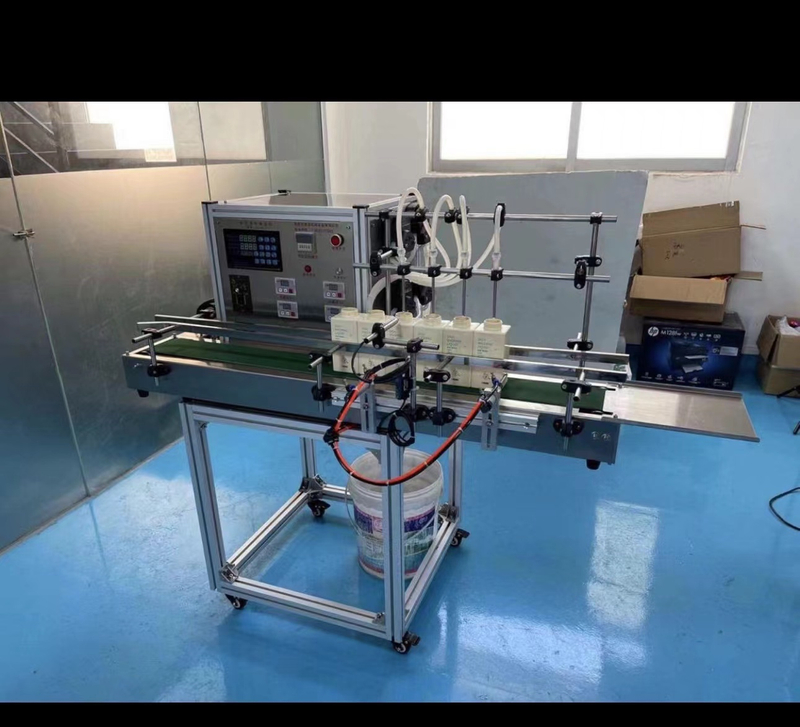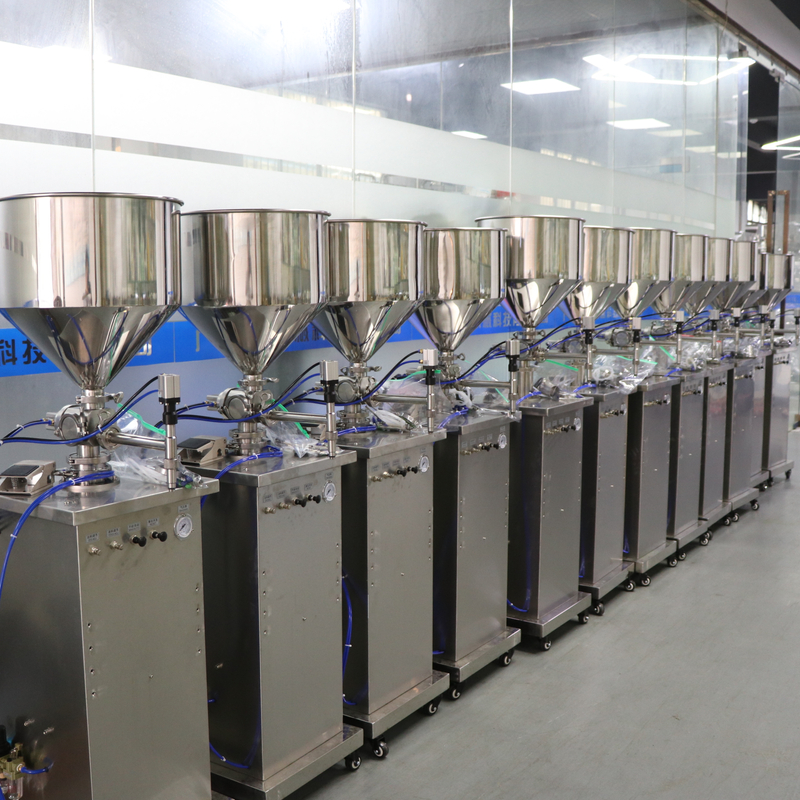T: +86-20-36204500
No. 3, Lane 3, Junmin East Road, Hebian, Baiyun District, Guangzhou
Views: 0 Author: Site Editor Publish Time: 2025-08-12 Origin: Site








Are you struggling to choose the right bottle capper for your filling machine? The right capper can significantly impact your efficiency and product quality. In this article, we’ll explore the differences between manual, bench, and automatic bottle cappers. You’ll learn how each type meets specific needs in the packaging industry.

A bottle capper is a crucial device in the packaging industry. It secures caps onto bottles, ensuring they remain sealed during storage and transportation. This process is essential for maintaining product freshness and preventing contamination.
Capping involves several steps:
1. Preparation: Bottles are filled with the product.
2. Cap Placement: Caps are positioned on top of the bottles.
3. Capping: The capper applies pressure to seal the caps tightly.
This process can vary based on the type of bottle and cap used.
Bottle cappers work alongside filling machines to streamline production. They ensure that every bottle is securely capped after filling. This not only enhances efficiency but also reduces the risk of spills and leaks.
There are three main types of bottle cappers, each suited for different production needs:
● Manual Bottle Cappers: Ideal for small-scale operations. They require human effort to operate but are cost-effective and flexible.
● Bench Bottle Cappers: These are semi-automated devices. They provide better stability and consistency than manual cappers, making them suitable for medium-scale production.
● Automatic Bottle Cappers: Designed for high-volume production lines. They integrate with filling machines and can cap bottles at high speeds, ensuring a quick and efficient process.
Type | Best For | Key Features |
Manual | Small businesses | Cost-effective, portable |
Bench | Medium-scale operations | Stability, improved productivity |
Automatic | Large-scale production | High-speed, precision capping |
Choosing the right bottle capper depends on your production volume and specific needs. Each type has its advantages, making it essential to evaluate your requirements carefully.
Manual bottle cappers are simple yet effective tools used for sealing bottles. They can be either handheld or mounted on a workbench.
● Handheld Cappers: These are portable and easy to use. You simply hold the capper and press down to secure the cap.
● Mounted Cappers: These sit on a stable surface, providing better leverage and stability during operation.
The mechanism of applying pressure varies. Most manual cappers use a lever system. When you pull the lever, it applies downward force to the cap, securing it tightly onto the bottle.
Manual bottle cappers offer several notable features:
● Simple Design: They have few moving parts, making them easy to operate and maintain.
● Portability: Lightweight and compact, they can be moved or stored easily.
● Cost-Effectiveness: Ideal for small-scale operations, they are often less expensive than automatic options.
These cappers come with distinct advantages:
● Flexibility: They can handle various bottle and cap types, making them versatile for different products.
● Small Batch Production: Perfect for businesses that produce limited quantities.
● Artisanal Use: Great for home-based producers or craft breweries.
However, manual cappers do have some drawbacks:
● Slow Operation: Capping can be time-consuming, especially for larger batches.
● Operator Fatigue: Repetitive motion may lead to tiredness over extended use.
● Inconsistent Quality: Over long runs, capping quality may vary depending on the operator’s technique.
The market offers various options for manual bottle cappers. Here’s a quick overview:
Brand | Ergonomic Design | Material Quality | Comfort Level | Durability |
Brand A | Yes | High | Excellent | Very Durable |
Brand B | No | Medium | Good | Moderate |
Brand C | Yes | High | Very Comfortable | Excellent |
When choosing a manual bottle capper, consider ergonomic designs and material quality. These factors contribute to comfort and durability. Comparing different brands can help you find the best fit for your needs.
Bench bottle cappers are designed for stability and efficiency. They are mounted securely on a workbench, which provides a solid base for capping bottles.
● Operation: Users place a bottle under the capper, align it, and then activate the mechanism.
● Activation Mechanism: Most bench cappers use either a lever or a pedal. Pulling the lever or pressing the pedal applies pressure to the cap, securing it tightly onto the bottle.
Bench bottle cappers come with several key features that enhance their usability:
● Stability: Being mounted on a workbench ensures consistent capping results without wobbling.
● Height Adjustability: Many models allow for height adjustments, accommodating various bottle sizes effortlessly.
● Enhanced Leverage: The design often includes levers that reduce the effort needed to cap bottles, minimizing operator fatigue.
These cappers provide several advantages for users:
● Improved Productivity: They are faster than manual cappers, allowing for higher output.
● Better Capping Quality: The stability and leverage lead to consistent seals, reducing the risk of leaks.
● Suitable for Small to Medium Production: They work well for businesses that produce moderate quantities but need reliable performance.
Despite their benefits, bench bottle cappers have some limitations:
● Limited Mobility: Once installed, they are not easily moved, which can be a drawback for smaller workspaces.
● Manual Operation Required: Each bottle must still be capped manually, which can slow down production.
● Potential Operator Fatigue: During lengthy production runs, repetitive motion may lead to fatigue.
When looking for bench bottle cappers, consider the following factors:
Feature | Brand A | Brand B | Brand C |
Height Adjustment Mechanism | Manual | Automatic | Manual |
Ergonomic Design | Yes | No | Yes |
Additional Accessories | Cap dispenser | Bottle holder | None |
Capping Speed | Moderate | High | Moderate |
Comparing height adjustment mechanisms can help you find the best fit for your needs. Ergonomic designs and additional accessories, like bottle holders or cap dispensers, can enhance the capping process. Each brand offers unique features, so consider what matters most for your production setup.
Automatic bottle cappers are designed for efficiency and speed. They are often integrated into larger packaging systems, working seamlessly alongside filling machines.
● Integrated Systems: These cappers are part of a complete packaging line, ensuring that bottles are filled and capped in one continuous process.
● Detection Mechanisms: Advanced sensors detect the presence of bottles and caps. This ensures that each bottle is capped correctly, preventing errors in the production line.
These cappers come packed with features that enhance their performance:
● High-Speed Operation: Capable of handling large-scale production, these machines can cap hundreds of bottles per minute.
● Precision Capping: Equipped with torque control, they ensure each cap is tightened to the correct specification, preventing leaks.
● Automated Integration: They can easily connect to other packaging equipment, creating a streamlined workflow.
Automatic cappers offer several significant benefits:
● Mass Production Capability: They keep pace with high-speed filling machines, making them ideal for large operations.
● Consistent Quality: Automation reduces human error, ensuring uniform capping quality across all bottles.
● Adjustable Capping Force: Operators can set the capping force based on the specific bottle and cap types, enhancing versatility.
Despite their advantages, there are some drawbacks to consider:
● High Initial Cost: The upfront investment can be substantial, making them less accessible for small businesses.
● Maintenance Complexity: These machines often require specialized technicians for repairs, which can be a hassle.
● Potential Downtime: Maintenance or repairs can lead to downtime, affecting production schedules.
When evaluating automatic bottle cappers, here are some key comparison points:
Feature | Brand A | Brand B | Brand C |
Capping Speed | 600 bottles/min | 800 bottles/min | 500 bottles/min |
Torque Control | Yes | Yes | No |
User-Friendly Interface | Yes | No | Yes |
After-Sales Support | Excellent | Good | Fair |
Durability | High | Moderate | High |
Different brands offer varying capping speeds and torque control options. User-friendly interfaces can make operation easier, while robust after-sales support is crucial for long-term satisfaction. Comparing durability and construction quality can help you choose the best automatic bottle capper for your needs.

Selecting the right bottle capper involves several important factors. Here’s what you should keep in mind:
● Production Volume: Determine your production needs.
○ Low Volume: Manual cappers are great for small batches.
○ Medium Volume: Bench cappers work well for moderate production.
○ High Volume: Automatic cappers are ideal for large-scale operations.
● Type of Product: Consider the bottles you will be using.
○ Fragile Bottles: Choose a capper that minimizes pressure to avoid breakage.
○ Standard Bottles: Most capping machines can handle these easily.
● Budget Considerations: Different types of cappers come at varying price points.
○ Manual cappers are usually the most affordable.
○ Bench cappers fall in the mid-range.
○ Automatic cappers require a higher investment but offer more efficiency.
Each type of bottle capper has its ideal use cases. Here’s a breakdown:
Bottle Capper Type | Ideal Use Cases | Industries & Products |
Manual Cappers | Small-scale production | Home brewers, craft artisans, small food producers |
Bench Cappers | Moderate production runs | Local breweries, small bottling companies |
Automatic Cappers | Large-scale, high-speed production | Beverage manufacturers, pharmaceutical companies |
● Examples of Industries:
○ Manual cappers are perfect for craft breweries or local food producers.
○ Bench cappers suit small to medium-sized manufacturing setups.
○ Automatic cappers are essential for large beverage or pharmaceutical companies.
● Considerations for Home-Based vs. Industrial Applications:
○ For home-based applications, manual or bench cappers are often sufficient.
○ Industrial applications typically require automatic cappers to meet high demand and efficiency.
Choosing the right bottle capper can significantly impact your production efficiency and product quality. Think about your specific needs to find the best fit for your filling machine.
Manual, bench, and automatic bottle cappers serve different needs. Each type varies in production volume and cost. Aligning your choice with production requirements and budget is crucial.
Before deciding, evaluate your specific needs. We encourage readers to share experiences or ask questions about bottle cappers.
A: Manual cappers are ideal for small businesses due to their affordability and ease of use.
A: Regularly clean the machine, check for wear, and follow the manufacturer's maintenance guidelines.
A: While possible, manual cappers are not efficient for high-volume production compared to automatic options.
A: Common issues include sensor malfunctions, misalignment, and the need for specialized repairs.
A: Assess your production volume, bottle type, and budget to find the best fit.